What does my Homeowners Policy Cover?
Have you ever wondered, “What does my homeowners insurance policy actually cover?”
When you purchased your policy, were you shopping for the correct coverage or were you comparing prices? In recent years, many people have shifted their focus to being budget-minded, which is understandable in today’s economy. However, it’s important to be selective about where you cut corners – and your homeowners insurance is not the place to do it. Consider the possibility of a fire in your home. Now consider your current policy. Do you have sufficient coverage – not only to rebuild your home, but to replace your furniture, clothing and valuables? If the answer is “I’m not sure…” it’s time to review your policy.
Start with the Dwelling Coverage: This coverage is for the home itself. This portion of the policy will pay to repair or rebuild your home if damaged by fire, hurricane, hail, lightning or other covered disaster. The appropriate amount of coverage is what it would cost to completely tear down the destroyed structure, remove the debris, and rebuild a new home in its place. Most people think the coverage should be what they paid for (or what they owe on) their home. This isn’t the case. Usually, the cost to completely replace a home will be more than the real estate market value. Also, this part of the policy pays for other structures, like sheds, detached garages and covered patios, etc. Typically, you’ll get 10% of the Dwelling Coverage for other structures. The insurance company will cover any costs up to the covered limits, after you pay the deductible. It’s important to note that a standard homeowners policy won’t pay for flood or earthquake damage and is not for everyday “wear and tear”.
Next, is Personal Property: This coverage is for your furniture, clothes and personal effects. Again, you’ll have coverage for any listed peril, including fire, lighting and theft. Most carriers will give approximately 50%-70% of the Dwelling Coverage for Personal Property. There are limits to the amount of coverage for each item, so read your policy carefully. If you have valuable jewelry, guns, china, camera equipment, etc., you may need to schedule (or list individually) these items separately, at an additional cost. Personal Property coverage extends to locations outside the home as well. So, if you are traveling and have your camera or laptop stolen, you’re covered up to the policy limits. Remember, any covered loss is subject to the deductible.
Perhaps one of the most valuable aspects to a homeowners policy is the Liability Coverage: This protects you from lawsuits for bodily injury or property damage that you or your family cause to other people. Speak with your licensed insurance professional about the appropriate amount of coverage for you. Liability coverage also pays for damage caused by your pets as long as you don’t own or shelter an excluded animal. In the event a neighbor or friend is injured on your property, you’ll have coverage for medical expenses as well. Generally, the Medical Expense coverage is somewhere between $1,000 and $5,000 per person injured.
Additional Living Expenses: In the event you are unable to live at home while your home is being repaired or rebuilt following a covered loss, this coverage will pay for hotel bills, restaurant meals and other expenses. Usually, this coverage is a percentage of the Dwelling Coverage.
Some important things to consider are: 1) Inflation Protection, in which your insurance company automatically increases your dwelling coverage each renewal to account for the increasing cost of labor and building materials. 2) Extended Replacement Cost which provides a specified percentage over and above your dwelling coverage to ensure your home can be restored to its original state after a total loss. This coverage is sometimes needed when building costs unexpectedly rise within an area where several homes are destroyed at once. 3) Building Code Upgrade coverage is important for homes that were built more than a few years ago. It covers the cost associated with bringing your home up to current building codes, as opposed to rebuilding the home in its current state.
You owe it to yourself and your loved ones to purchase the proper amount of coverage from a reputable and financially secure insurance company. Pay attention to the rating of the company and be secure in knowing your carrier will be around to pay claims when you need them. Check A.M. Best or Standard and Poor’s to see how your insurance company rates against its competitors.
Remember, it’s important to discuss your policy, in depth, with your insurance agent at the time you purchase the policy and at every renewal thereafter.
Please contact me for further information regarding any of your personal insurance needs.


